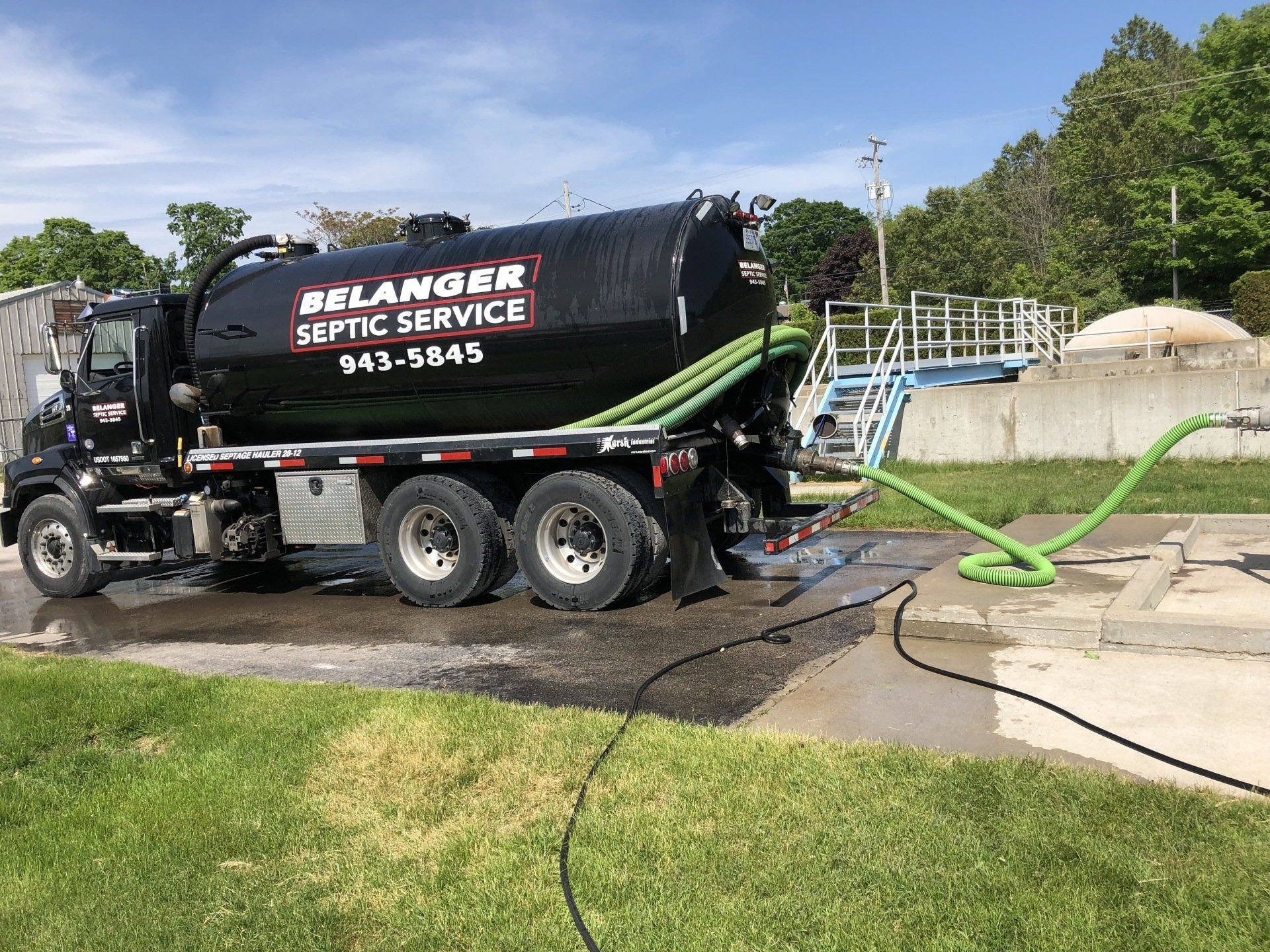How Does My Septic System Work?
Many people are often befuddled when it comes to a septic system. Out of sight out of mind is usually how we think about septic systems. However maintaining your septic system is an integral part of keeping a healthy home. A neglected septic system can cause serious health issues for your family, and for nature surrounding your home.
A septic system works like this. As you introduce water into the tank it fills until it reaches its proper level, which will be just below the inlet pipe. As the level of water rises it then leaves the tank at the outlet end of the septic. The water then flows through the pipe into the drainfield where it is filtered through sand and gravel, and reintroduced into the ground water. So why do you need to pump it if the water is always leaving? Solids and toilet paper start to build up from the first flush…grease and food particles always sneak into a septic system. Sometimes people flush things that do not break down with the natural bacteria in a tank, such as cigarette butts, tampons, condoms, baby wipes, or adult wipes, diapers, wash cloths…none of this should be flushed, but somehow always find their way into septic tanks. If you allow these solids to build up too much in your tank, they can and will find their way into your drainfield. Besides the fact that we don’t want this stuff helping to filter the water that goes back into the ground. Solids in your drainfield will cause it to fail. This can cost you thousands of dollars to replace. And again you don’t want this stuff just hanging around in your back yard do you? When a field fails the water is no longer filtered and will start to bubble out in your perfect lawn. We don’t want Fido or baby to be mucking around in that mess right?
A septic tank should be pumped every 3-5 years depending on your family size. A family with 5 members or greater should think about every 2 years or sometimes every year. Age of system also factors into your maintenance schedule. If your system is on the older side, you might think about pumping more often to help preserve your drainfield. Drainfields only typically have a 20-25 year life cycle, but can be extended with good maintenance. If you like to use more toilet paper than most, you might want to stay on a 2 year schedule. Please feel free to call anytime to discuss your maintenance needs, or any questions you may have.
All drains in your house lead to your septic system. Every faucet, toilet, drain, washing machine…everything that releases water runs into your septic system. An average family of four can use up to 400 gallons of water a day!! Bathroom usage is the biggest contributor to water consumption. The toilet alone can be 27% of that usage!! When thinking of your family size don’t count out your littlest family members. They may not use the toilet just yet, but they still require baths, hand washing, brushing teeth, and the laundry. We all know how much a little one can add to the laundry duties. Every member contributes to the septic system! Considering an average size septic for a 3 bedroom two bath house is 1200 gallons, it won’t take long to fill that tank up. So when you hear us say your septic tank will always be full…trust us it will be.
We will get back to you as soon as possible.
Please try again later.
Belanger's Septic Services offers septic inspections on septic system tanks, holding tanks & grease traps. Call (231) 943-5845 for septic service needs.
Address: 2233 M37 S, Traverse City, MI 49685 | Phone:
231-943-5845
|
231-943-2634
| Fax: 231-943-5250 | Email:
info@securitysanitation.com
| Business Hours: Monday-Friday: 7:00am-4:30pm







